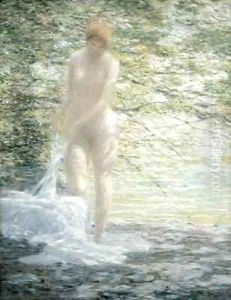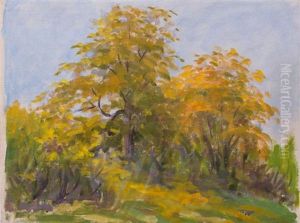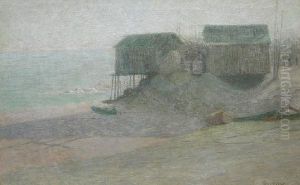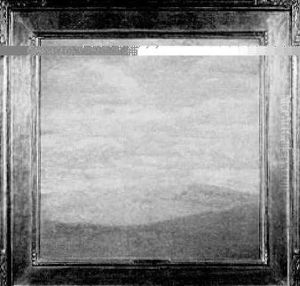Bolton Brown Paintings
Bolton Coit Brown was an American painter, lithographer, and mountaineer, born on September 27, 1864, in Dresden, New York. He played a significant role in the development of American printmaking in the early 20th century. Brown initially pursued his artistic education at Syracuse University, where he graduated in 1885. Subsequently, he continued his studies at the Art Students League of New York and later in Europe, where he was particularly influenced by the tonalist landscapes of the Barbizon School and the emerging Impressionist movement.
Upon returning to America, Brown became an instructor and eventually a co-founder of the Art Students League's summer school in Woodstock, New York, which would become a major center for American art. His involvement with teaching and art education was significant, but he also devoted himself to painting and printmaking. As a painter, Brown was known for his landscapes that often captured the mood and atmosphere of the natural environment.
In the realm of printmaking, Bolton Brown emerged as a pioneer of the lithographic process. He was not only a skilled practitioner but also an innovator, experimenting with technique and the expressive potential of lithography. He founded his own lithography studio in 1915 and worked with prominent artists such as George Bellows and Rockwell Kent, helping them to produce lithographs. Brown's technical expertise and his willingness to push the boundaries of the medium contributed to the resurgence of lithography as a fine art form in the United States.
Beyond his artistic endeavors, Brown was also an avid mountaineer. He was one of the first to explore the Sierra Nevada mountains in California, and in 1892, he was a key member of the expedition that completed the first ascent of Mount Brewer. His love for the mountains often intersected with his art, as he created works that reflected the rugged beauty and grandeur of the American landscape.
Brown's contribution to American art was multifaceted, encompassing teaching, painting, and the advancement of lithography. His works are held in various collections including the Metropolitan Museum of Art, New York, and the Smithsonian American Art Museum, Washington, D.C. Bolton Brown passed away on September 15, 1936, leaving behind a legacy that highlighted the importance of technique and innovation in the evolution of American printmaking.



